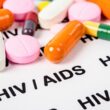COPD
The Global Burden of Chronic Obstructive Pulmonary Disease (COPD)
Breathing becomes challenging with chronic obstructive pulmonary disease (COPD), a lung condition that progresses over time. It affects millions of people globally and puts a heavy burden on healthcare systems. It is a major health concern. This blog post delves deeply into the prevalence, mortality rates, and associated economic consequences of COPD worldwide.
Table of Contents

Prevalence: A Pervasive Issue
The “Global Burden of Disease Study 2019″ [1] from the Institute for Health Metrics and Evaluation (IHME) estimates that there were 212.3 million prevalent cases worldwide in 2019. This corresponds to 2638.2 age-standardized point prevalence per 100,000 people. Even if there has been a little decline since 1990, COPD is still a major problem.
Age-wise, the prevalence rises dramatically, with people over 40 exhibiting a much higher risk. Furthermore, men are disproportionately affected by COPD in comparison to women.
Death by Fatality: The Main Cause of Death
The effects of go beyond only lowering life expectancy. It is a major global cause of death. According to the BMJ article “Burden of chronic obstructive pulmonary disease and its attributable risk factors in 204 countries and territories, 1990-2019″ [2], COPD was projected to have caused 3.3 million deaths worldwide in 2019. This corresponds to a death rate of 42.5 per 100,000 people, age-standardized.
Even though death rates have dropped since 1990, is still a serious risk. It is crucial to remember that COPD can cause deaths from other causes, such as respiratory infections, so these figures may not fully reflect the situation.
Economic Losses: A Stress on the Community
The financial cost of disease is high. According to the study “The global economic burden of chronic obstructive pulmonary disease for 204 countries and territories in 2020-50: a health-augmented macroeconomic modelling study” [3], the world economy will suffer a tremendous loss from COPD between 2020 and 2050, estimated at $4.326 trillion. This corresponds to an annual tax on the world GDP of about 0.111%.
These expenses are the result of several factors, such as:
- Direct medical care: Hospital stays, prescription drugs, and additional patient treatments.
- Indirect expenses: include care given by family members informally, early retirement, and lost productivity as a result of illness or incapacity.
Indirect costs: The financial load is not borne equally by all. Larger populations and higher rates of smoking are typically associated with higher costs. The economic cost of further compounded by the fact that low- and middle-income nations frequently lack the resources necessary to handle the condition effectively.
Final Thoughts: An Appeal for Action
The economic impact, mortality rate, and prevalence of present a worrisome picture. But there’s still hope. Public health campaigns that support early detection, better management techniques, and quitting smoking can greatly lessen the burden.
Investing in research to create new treatments and improve existing ones is also vital. By working together, we can make a difference in the fight against COPD and promote a healthy future for all.
Risk factors for COPD beyond smoking, such as air pollution and occupational exposures.
The necessity of early diagnosis and therapy to manage COPD and increase quality of life.
Available resources for persons living with and their families.


